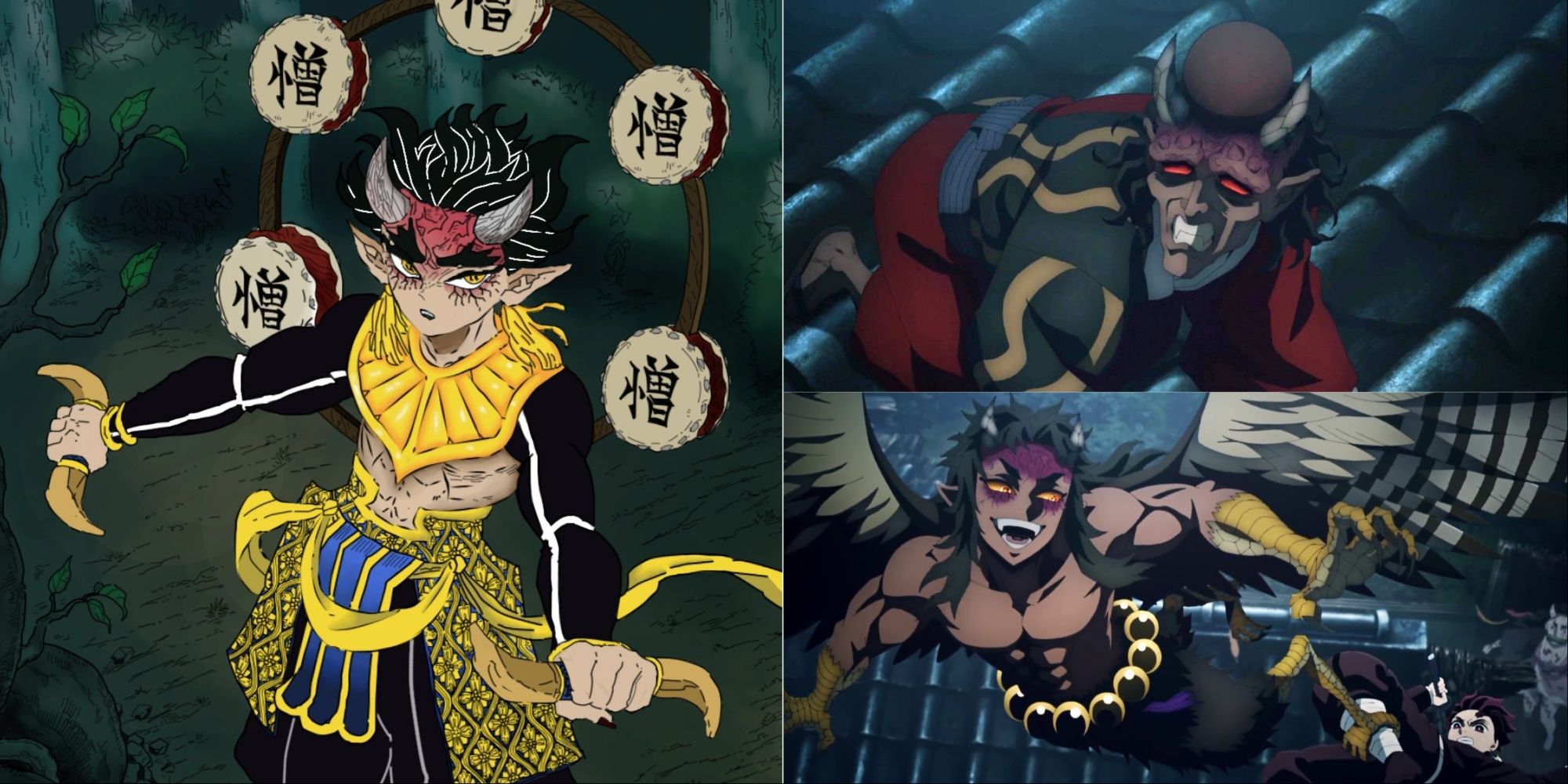
The Ultimate Guide to Hantengu's Blood Demon Art in Demon Slayer

Discover the intricacies of Hantengu's Blood Demon Art in Demon Slayer With versatile and complex abilities, the Upper Rank Four demon's clones channel his power to create deadly final forms
Hantengu, one of the Twelve Kizuki and an antagonist of the Swordsmith Village Arc in Koyoharu Gotouge's Demon Slayer, possesses one of the most intricate blood magic techniques in the series. With his Blood Demon Art, he can produce clones of himself that embody his emotions, providing him with a diverse range of offensive abilities and making him a formidable adversary. In combat, Demon Slayers face not just one opponent, but four or five clones with power on the level of an Upper Rank. Hantengu can merge his clones for an even stronger form or create more clones when fighting multiple opponents, displaying his adaptable fighting style. Hantengu's opponents must seek out and defeat his main body while fending off his clones, making it a complex and challenging fight. His abilities are rooted in elemental powers associated with the Breathing Styles of the Demon Slayer Corps, and his clones can compensate for any weaknesses when facing a strong opponent. Despite his main body appearing frail and cowardly at first glance, Hantengu's reputation among Muzan and his peers is high due to his formidable abilities.
What Is Hantegu's Blood Demon Art?
Hantengu's Blood Demon Art manipulates emotions by creating clones of his main body, each embodying a different emotion that arises from his psyche. The clones are created each time his throat is cut and are represented by a kanji character on their tongues. These clones can also create new clones when beheaded, but are most powerful when four are present. They are virtually immortal as long as Hantengu's main body is safe, but cutting off their tongues can hamper their regeneration. The emotions embodied by the clones include anger, pleasure, sorrow, joy, hatred, and resentment, with each clone resembling a younger version of Hantengu. The clones are named after "Kidoairaku," a Japanese four-character idiom that means "the range of human emotions." Despite their youth, the clones are capable of fending off high-level Demon Slayers, with Zohakuten being particularly strong and able to hold his own against the Love Hashira Mitsuri Kanroji, even forcing her to awaken her Demon Slayer Mark. Hantengu's Blood Demon Art is one of the most challenging abilities to combat, making it practically impossible for any one Demon Slayer to withstand, even the strongest Hashira.
How Do Hantengu's Clones Channel His Power?
Sekido wields a Khakkhara formed from his own flesh, which can unleash powerful electric pulses upon impact with the ground or any other surface. These pulses are incredibly potent, capable of instantly paralyzing strong opponents and even forcing airborne foes to plummet to the ground. Additionally, Sekido's attacks have a wide range and can penetrate virtually any barrier, with the sole exception being Hantengu's own flesh. As Hantengu's anger made manifest, Sekido is the most irritable and dominant of the clones, and he consumes the other three to create Zohakuten.
Urogi, the final clone of the original set, embodies Hantengu's joy and approaches each battle with a contagious sense of delight, making him the most cheerful of the four. Unlike his counterparts, Urogi's physique displays avian traits and is notably light, with feathered wings that allow him to soar through the air. His unique ability involves emitting powerful sound waves from his mouth through screaming, a technique that he can also execute through other areas of his body by manipulating flesh to create additional mouths. Although his primary attack can easily incapacitate Tanjiro, its potency diminishes when utilized from other bodily locations.
Hantengu's Final Forms
Zohakuten emerges as a new form of Sekido after he devours the other three demons. While sharing many similarities with Sekido, Zohakuten embodies Hantengu's hatred and exudes an assertive and calculated personality. Unlike Hantengu's other clones, Zohakuten is much younger and fiercely loyal to his master Muzan. His primary ability involves manipulating the surrounding flora to create gigantic wooden dragons by tapping the floating drums on his back. These dragons possess immense power, capable of destroying large barriers and crushing opponents instantly with their powerful jaws. They can even extend in length by birthing additional dragons from within their mouths.
Zohakuten possesses the combined abilities of all four of Hantengu's main clones, which he can channel through his wooden dragon heads. These abilities include generating electricity, producing powerful gusts of wind, emitting sound waves, and launching attacks from thin air. In addition, Zohakuten can also perform these feats without the aid of the dragon heads. His formidable strength is evidenced by his ability to single-handedly fight off a Hashira, two Demon Slayers, and a demon as strong as Nezuko. Urami, Hantengu's embodiment of resentment, bears a striking resemblance to the main body but is characterized by his gargantuan size, furious expression, and the kanji for "resentment" inscribed on his tongue. It is speculated that Urami may also possess the abilities of all the other clones, making him Hantengu's last resort in dire situations.
















